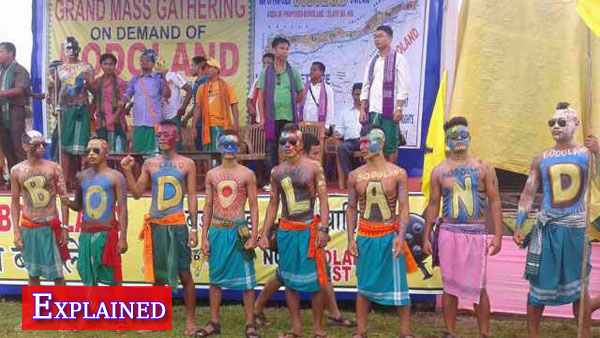
As Bodo Group agrees to peace talks, who are the Bodos explained
Guwahati, Jan 25: One of the most wanted by the list of National Investigation Agency (NIA) Bishnu Goyari aka Bidai, the dreaded commander of the National Democratic Front of Bodoland (NDFB), reached Delhi for negotiations with the Centre after coming out of hiding recently.
Bidai was accused of masterminding series of attacks that killed over 80 Bodoland adivasis on 2014. The Interpol has issued red corner notice against him on the Centre's request.

It came as a blow to the insurgency of Northeast as the NDFB signed a tripartite agreement on January 16 over suspension of operations, with the central and state governments.
According to the agreement, NDFB is to give up the act of violence and join peace talks with the government.

Also, another leader Batha with over 50 active members of the outfit is likely to join the peace process on January 22.
Who are the Bodos
The bodos, the earliest inhabitants of Assam, ruled almost the entire northeast India, parts of Nepal, Bhutan, North Bengal and Bangladesh.
Bodos consist of 34 tribal communities in Assam.
In the 20th century, Bodos faced a series of concerns like illegal immigration, encroachment of their lands, forced assimilation, loss of language and culture. This led Assam to witness the emergence of Bodo movements for safeguarding the rights of the tribal communities in the area.
According to Bodos, they are consistently deprived of the political and socio-economic rights by successive state and central governments.
Statehood demand
Constant immigration from Bangladesh and state governments' empty measures to prevent the encroachment of the tribal belts, created mistrust and discontent among the Bodos. Consequently, they started to campaign for separate union territory and later agitating for the creation of the Bodoland state.
A group of educated Bodo youths formed an armed militia called the Bodo Security Force (BSF). This was later renamed as the National Democratic Front of Bodoland (NDFB) with the objective of establishing a sovereign Bodo homeland.
Failed Bodo Accords
Since the Bodoland movement began in 1987 under the leadership of Upendranath Brahma of the All Bodo Students' Union (ABSU), government has inked two peace agreements with them.

The first Bodo Accord, signed on 20 February 1993, proved to be failed as it did not deliver full democracy to the territory.
The second Bodo Peace Accord, on 10 February 2003, led formation of Bodoland Territorial Council (BTC) with jurisdiction over four districts: Kokrajhar, Baksa, Udalguri and Chirang.
But it could not fulfil the aspirations of the Bodos as the issues of illegal immigration, protection of tribal belts remained unresolved. And despite signing two accords the confliction had increased.
The massacre
The December 23, 2014 attacks, described as one of the worst massacres in the history of North-East India.
Arm confliction between NDFB, Government and adivasi led killing of two NDFB cadre killed by Assam Police and doubts on adivasis of assisting Assam police, the NDFB militants under the leadership of Bidai, attacked unarmed villagers in the three different districts of Assam- Chirang, Sonitpur and Kokrajhar which resulted in the deaths of more than 80 people, including 21 women and 18 children.


 Click it and Unblock the Notifications
Click it and Unblock the Notifications


































